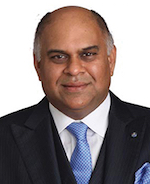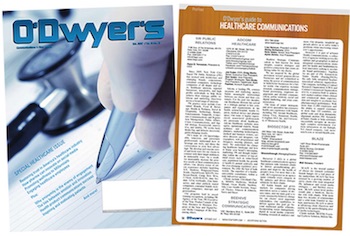|
|
The great Roger Ebert said it best: “Your intellect may be confused, but your emotions will never lie to you.”
No Gabriel Trumpet could have uttered a truer note, especially in an age where innovation often occurs through hard and not soft wiring of our brains. Why is emotion so important to building and marketing the next pioneering product?
There are many reasons why.
In a recent Forbes article, Ed Hess, Professor of Business Administration and Batten Executive-in-Residence at the University of Virginia Darden School of Business, wrote that leading research by cognitive, social, and positive psychologists has produced strong evidence that positive emotions enable and enhance cognitive processing, innovative thinking, creativity and lead to better judgments and decision making. Hess adds that research has also shown that negative emotions — especially fear and anxiety — have the opposite effect.
|
|
So how does this translate to the innovation process? For starters, it puts the focus squarely on identifying and satisfying consumer needs — in some cases needs they may not even be aware of — and driving the entire innovation development and communications process around that. American consumers are attracted to companies that focus on their specific needs — brands that “get” them. In fact, a majority of Americans (57 percent) are more likely to trust a company that consistently offers excellent customer service over one that consistently offers excellent prices (43 percent), according to an rbb Communications Breakout Brands Survey. The survey also reveals how emotional attachments between a company and the customer not only make them more eager to buy a product or service, but they are also willing to pay a lot more for it.
In my own experiences working in the pharmaceutical industry, I have found that there is often room for improvement in making the connection between emotion and innovation. The phrase “unmet need” is used frequently, however, much of the data surrounding why such products are needed rely more on clinicians and science, and not on a consumer’s actual desires. Establishing strong and lasting bonds with patients, caregivers, physicians, and providers is critically important. By truly understanding the behavior, buying habits, personal considerations, and emotional appeal of their products with the constituents whom they serve, lasting bonds can be created. Making products that truly make a difference can be hard work. But the investment to really understand what appeals to key audiences, and to communicate accordingly, can make a significant impact and enhance a company’s reputation and overall success. Simply put, emotion sells.
When you take that into account when you innovate, the customer will thank you and your reputation will gain star status. Look at companies like Merck Serono*. They recently launched a new medicine called MAVENCLAD for multiple sclerosis in Europe. In seeking this approval, the company faced several obstacles. To begin, the medicine was not approved some years ago because there was concern about a potential side effect. Yet, Merck remained convinced that they were on the right track with an innovative medicine that would truly make a difference in the lives of patients who deserved better. They persevered, conducting rigorous studies to showcase how this first, only, short-course oral therapy provides four years of disease control with a maximum of 20 days of treatment. And they made the effort to translate these clinical and scientific advances into plain language that would resonate with MS patients and their families. Instead of touting clinical efficacies and scientific advances, the message stayed focused on patient needs: -MAVENCLAD’s key attributes meant time back and money saved for patients — time back to enjoy quality of life because of shorter treatment regimens, reduced monitoring requirements and most of all, the potential of extended periods free of disease symptoms. And money back as well — a consideration for payers and patients — because of the same product innovation attributes.
Other companies are also to be commended for their desire to establish a strong patient connection. Insights showed Johnson & Johnson that patients with schizophrenia often don’t stick to their schedules for taking medication, so they invented medicines like INVEGA TRINZA that delivered the right amount of drug at fewer intervals so patients could have better compliance. J&J’s head of neuroscience, Dr. Husseini Manji, is a brilliant visionary who deeply cares about patients. He has helped countless families get the right psychiatrist to evaluate and treat their loved ones.
Sometimes it takes the right leadership to drive success. Anthera Pharmaceuticals*, a biopharmaceutical company focused on treatments for rare diseases, has very much focused its drug development efforts on the needs of its customers. For example, when initial clinical trials did not meet their primary endpoint in December 2016, newly appointed CEO Craig Thompson was motivated and used both emotion and innovation to inspire his team and investors to stay the course. This is because he believed in the efficacy of the product, and knew it was Anthera’s responsibility to bring a sense of normalcy to these patients. More information about the results of this trial will be known in a few months.
Through feedback, data, insights, and passion, researchers have answered the call for patients in many disease areas. In the early 1980s an HIV diagnosis meant getting your affairs in order, and the same can be said for Hepatitis C, once considered incurable. Thanks to a number of strong advocacy groups who humanized the disease, and used emotion to successfully lobby the government and pharmaceutical companies, we have treatments and cures for these patients to live longer, healthier lives. In an age where clairvoyance is heresy, I believe that diabetes will be cured within a decade because our understanding of the disease and what patients want is so clearly understood.
Patients want medicines to give them their lives back. They aspire and dream like everyone else. They want to hold their grandchildren; stay active and independent; We’re in the business of improving lives, not just talking about advances in medical science. So why not spend more time gaining insights that can help truly develop and distribute medicines that patients need?
For PR practitioners, in healthcare and elsewhere, to be successful and to represent the best interests of their clients and society, it is imperative to truly “pull back the hood” and understand the emotional drivers that dictate the demand for innovative products and services. Only then can the informative process of what is truly revolutionary take center stage and introduce a brand-new world of sensational products with inelastic demand, representing the choices, dreams, and preferences of the customer.
***
Srikant Ramaswami is EVP, global and emerging markets, healthcare, rbb communications. Contact him at: [email protected].
*Merck Serono and Anthera Pharmaceuticals are clients of rbb Communications.

 Srikant Ramaswami
Srikant Ramaswami 

 Lo Isidro, senior director at Real Chemistry with more than a decade of strategic communications and PA experience, has joined Narrative Strategies.
Lo Isidro, senior director at Real Chemistry with more than a decade of strategic communications and PA experience, has joined Narrative Strategies. Nelson Fernandez, former North American chair of APCO Worldwide and managing director of Burson-Marsteller, has joined Volunteers in Medicine Berkshires as director of communications and PA.
Nelson Fernandez, former North American chair of APCO Worldwide and managing director of Burson-Marsteller, has joined Volunteers in Medicine Berkshires as director of communications and PA. Lilit Bargar, who was most recently an EVP in the healthcare practice at Weber Shandwick, comes on board at GCI Health as EVP, corporate practice lead.
Lilit Bargar, who was most recently an EVP in the healthcare practice at Weber Shandwick, comes on board at GCI Health as EVP, corporate practice lead.
 Five ways that successful thought leaders are made.
Five ways that successful thought leaders are made.


 Have a comment? Send it to
Have a comment? Send it to 
No comments have been submitted for this story yet.